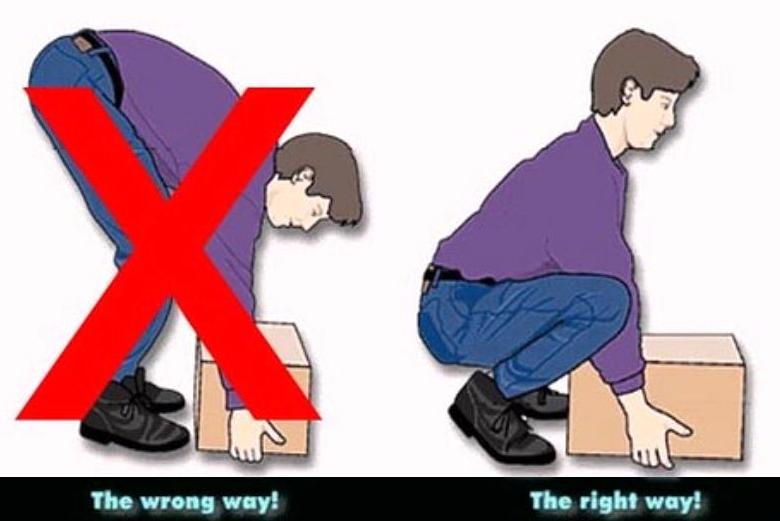 Unless you live in a warm-weather state where you can enjoy (or merely tolerate) doing yard work all year around, once the last of the snow has disappeared, it is time to start thinking about yard work once again. Even if you’ve been shoveling snow all Winter, you’re likely to use different muscles, plus you will be squatting and bending, as opposed to lifting and throwing the snow. If you have a snow blower, or your spouse or a service takes care of the snow, you might be out of shape somewhat, so, before you plan on doing yard work, you might want to begin by doing stretches, squats and lunges a few weeks before you tackle the raking/thatching and bagging up of debris, or tending to the yard in general. It really will help to be more flexible for the job at hand, and, you sure don’t want to overdo your unused muscles just because you insist on doing all the work in one weekend. That’s the way to likely incur pain in the back, or aching shoulders.
Unless you live in a warm-weather state where you can enjoy (or merely tolerate) doing yard work all year around, once the last of the snow has disappeared, it is time to start thinking about yard work once again. Even if you’ve been shoveling snow all Winter, you’re likely to use different muscles, plus you will be squatting and bending, as opposed to lifting and throwing the snow. If you have a snow blower, or your spouse or a service takes care of the snow, you might be out of shape somewhat, so, before you plan on doing yard work, you might want to begin by doing stretches, squats and lunges a few weeks before you tackle the raking/thatching and bagging up of debris, or tending to the yard in general. It really will help to be more flexible for the job at hand, and, you sure don’t want to overdo your unused muscles just because you insist on doing all the work in one weekend. That’s the way to likely incur pain in the back, or aching shoulders.
Probably the best and most-important advice from a top spine doctor in Summit, New Jersey would be to bend your knees. Those 40-pound bags of topsoil are a challenge for a lot of people once gardening begins in earnest. First you must heft them out of the back of your car and that can strain your back, especially if you twist and turn your torso the wrong way. Why not have a four-wheeled dolly at the ready to move those heavy bags from the car to where they will be used? Also, getting up and down from a kneeling or squatting position may be awkward or difficult for some. Don’t risk damaging your back – why not treat yourself to a rolling garden seat to make gardening easier and more enjoyable?
Those in the healthcare industry
Most people that are involved in the healthcare industry, especially those immersed in direct assistance in patient care (especially moving patients on a continual basis), are very familiar with protecting themselves from work-related injuries. The physical environment of a healthcare setting i.e. the tight quarters and configuration of patient’s rooms, nurses’ work stations and equipment are conducive to incidents from using the body incorrectly to lift or move weight. This is because many patients in a healthcare facility may be unable to assist in transferring themselves from the bed to a chair.
According to the National Institute for Occupational Safety and Health, the average weight of patients who require lifting assistance is 169 pounds, yet the average healthcare worker should not lift more than 51 pounds in a controlled and limited circumstance, because incorrect or excessive lifting causes too much pressure on the muscles of the lower back, which are muscles which cannot take the added stress, and often cause severe injuries.

Thus, healthcare workers are very mindful of the proper procedures for lifting and moving patients to avoid hurting their back or incurring musculoskeletal disorders.
About body mechanics
For the person who does not work in the healthcare field, but wishes to be proactive about protecting their back and muscles, whether for yard work, picking up a child or pet, or packing up your house to move, here are some suggestions to avoid compressing the spinal discs or straining your lower back when you are lifting:
Keep a wide base of support
- Keep your feet at least shoulder-width apart, with one foot slightly ahead of the other (think of a karate stance position).
- Squat down, being careful to bend at the hips and knees only. If necessary, put one knee to the floor and your other knee in front of you, bent at a right angle (think of a half-kneeling position).
- Keep good posture and look straight ahead, keep your back straight, your shoulders back and your chest out. This position will help to keep your upper back straight while having a slight arch in your lower back.
- Slowly lift by straightening your hips and knees (not your back). Keep your back rigid and straight, and remember not to twist as you lift.
- Hold the load as close to your body as possible, at belly button level.
- Use your feet to change direction, and then only by taking small steps.
- Lead with your hips as you change direction, remembering to keep your shoulders in line with your hips as you move.
- Set your load down carefully, again remembering to squat with the knees and hips only.
It is important to remember the following:
- Do not attempt to lift by bending forward. Bend your hips and knees to squat down to your load, keep it close to your body, and straighten your legs to lift.
- Never lift a heavy object above shoulder level.
- While lifting or holding a heavy object, try to avoid turning or twisting your body.
 If you practice these rules of good body mechanics, you will save your back and avoid an injury and the inevitable trip to the spine doctor.
If you practice these rules of good body mechanics, you will save your back and avoid an injury and the inevitable trip to the spine doctor.



